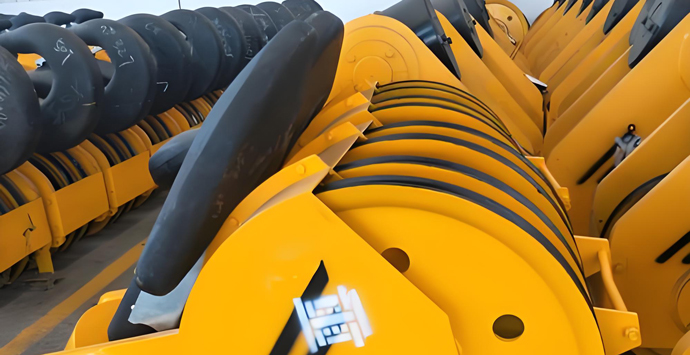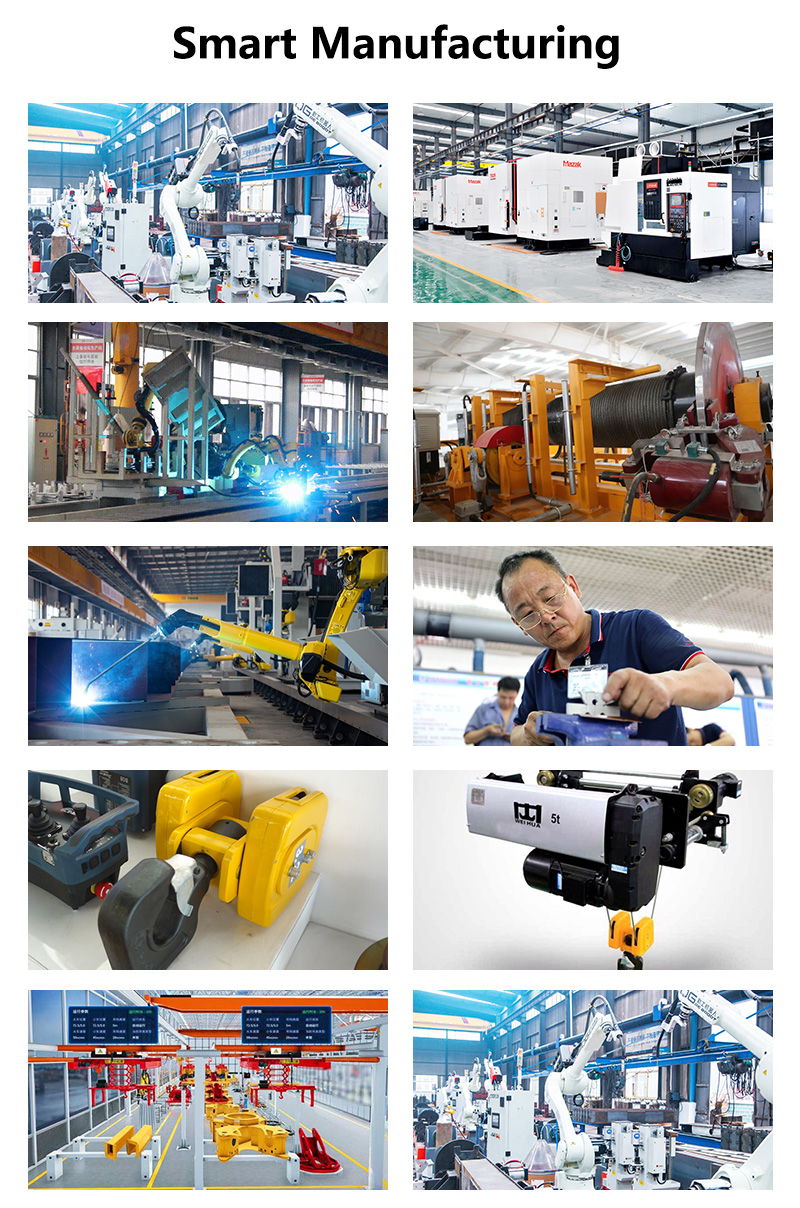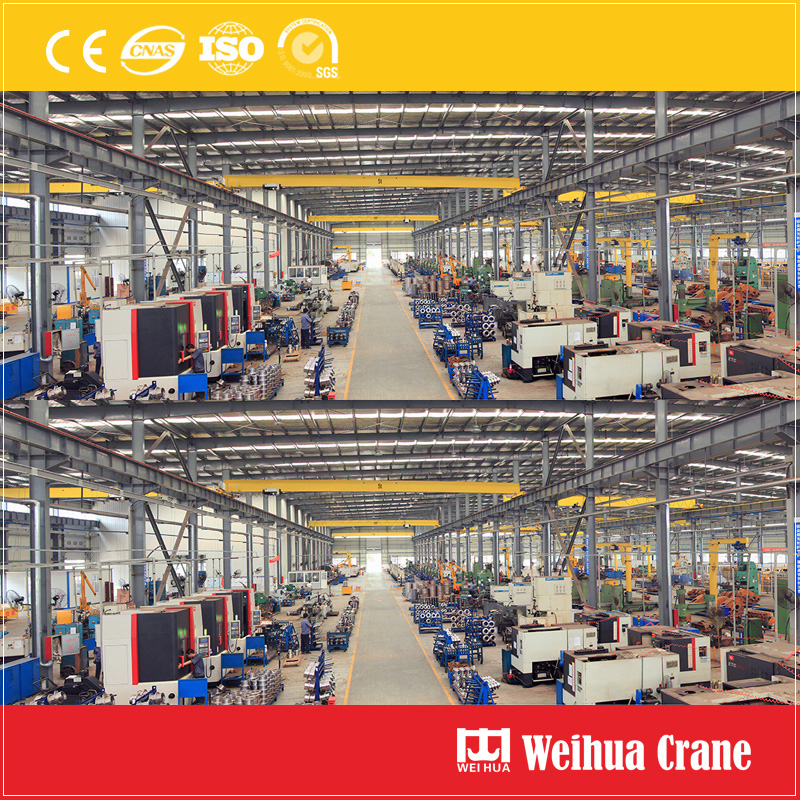Standar Faktor Keamanan Hook Crane
2025-08-21
Di dunia penanganan material dan angkat berat, itu crane hook adalah komponen yang tampak sederhana. Ini adalah penghubung terakhir yang penting antara derek dan beban, menanggung tekanan luar biasa dari ribuan kilogram yang melayang di udara. Integritas dari satu bagian logam yang ditempa atau dicor ini tidak dapat ditawar. Di sinilah konsep faktor keamanan menjadi hal yang terpenting. Kepatuhan terhadap standar faktor keamanan kait derek yang ketat bukan sekadar formalitas peraturan; ini adalah prinsip teknik dasar yang mencegah kegagalan besar dan menjamin perlindungan kehidupan, dahan, dan properti.

Apa itu Faktor Keamanan?
Faktor keamanan (juga dikenal sebagai faktor keamanan – FoS) adalah pengali numerik yang diterapkan pada beban maksimum yang diharapkan dapat ditangani oleh suatu komponen. Ini mewakili rasio antara kekuatan kegagalan akhir komponen (titik di mana ia rusak) dan batas beban kerja maksimumnya (Wll).
Rumus: Faktor keamanan (FoS) = Beban Kegagalan Ultimate / Batas beban kerja (Wll)
Misalnya, jika sebuah kail mempunyai WLL sebesar 10 ton dan dirancang dengan faktor keamanan sebesar 4:1, itu berarti pengait dibuat dari bahan dan dimensi yang hanya akan gagal di bawah beban berat 40 ton. Margin bawaan ini menyebabkan ketidakpastian yang tidak mungkin dihilangkan sepenuhnya dalam operasi dunia nyata.
Mengapa Faktor Keamanan Tinggi Diperlukan untuk Kait Derek?
Beban pada kait derek tidak pernah dapat diprediksi secara sempurna. Faktor keamanan merupakan penyangga penting terhadap sejumlah kondisi dinamis dan sering kali tidak terduga:
- 1. Beban Dinamis: Tegangan terbesar pada kail tidak terjadi pada saat dipegang secara statis, tapi saat mengangkat, penurunan, atau berhenti. Inersia suatu beban yang bergerak dapat melipatgandakan gaya yang diberikan pada kait secara instan (sebuah fenomena yang dikenal sebagai “beban kejut kerekan”).
- 2. Pemuatan Samping dan Sudut Sling: Kait dirancang terutama untuk tegangan sejajar vertikal. Tarikan samping atau beban apa pun yang diterapkan dari suatu sudut akan menimbulkan tegangan lentur sehingga pengait tidak dirancang secara optimal, secara signifikan meningkatkan risiko kegagalan.
- 3. Kekurangan dan Kelelahan Materi: Seiring waktu, logam dapat mengalami patahan mikro akibat pemuatan dan pembongkaran yang berulang-ulang (kelelahan). Faktor keamanan yang tinggi memastikan pengait dapat menahan siklus ini jauh sebelum retakan menjadi kritis.
- 4. Faktor Lingkungan: Korosi, suhu ekstrim, dan keausan dapat menurunkan sifat material pengait, secara efektif mengurangi kekuatannya selama masa pakainya.
- 5. Kesalahan Manusia dan Modifikasi Tidak Sah: Faktor keamanan memberikan margin kesalahan yang penting jika terjadi kelebihan beban yang tidak disengaja atau penggunaan yang tidak tepat.

Standar Faktor Keamanan Kait Derek Internasional Utama
Secara global, beberapa organisasi terkemuka menetapkan standar untuk desain derek dan kait. Sedangkan nilai numeriknya serupa, mereka dapat bervariasi berdasarkan jenis derek, kelas layanan, dan materi.
1. Iso (Organisasi Internasional untuk Standardisasi)
- Iso 4301 (Derek — Klasifikasi) dan iso 17096 (Derek — Pengaman — Kerekan) memberikan kerangka menyeluruh. Mereka mengklasifikasikan crane ke dalam kelompok tugas yang berbeda (MISALNYA., M1 hingga M8) berdasarkan jumlah siklus operasi dan spektrum beban.
- Faktor keamanan yang diperlukan untuk kait meningkat seiring dengan bertambahnya kelompok tugas. Untuk kait paling umum pada derek serba guna (biasanya terbuat dari baja tempa), faktor keamanan minimum pada WLL adalah 4:1.
2. Fem (Federasi Penanganan Material Eropa)
- Fem 1.001: Standar ini merupakan landasan dalam desain derek Eropa. Ini dengan jelas menetapkan bahwa semua komponen penahan beban, termasuk kait, harus memiliki faktor keamanan minimum relatif terhadap kekuatan luluh material.
- Untuk kait, FEM biasanya memerlukan faktor keamanan minimum sebesar 2:1 pada kekuatan luluh dan, lebih penting lagi, minimal 4:1 (seringkali lebih tinggi) pada kekuatan tarik ultimit relatif terhadap WLL. Ini memastikan pengait tidak berubah bentuk (menghasilkan) dalam penggunaan normal dan tidak akan patah karena beban berlebih yang ekstrem.
3. Asme (Perkumpulan Insinyur Mekanik Amerika)
- ASME B30.10 (Kait) adalah standar utama di Amerika Serikat yang mengatur desain, inspeksi, dan penggunaan kait.
- Mirip dengan standar internasional, ASME B30.10 mengamanatkan bahwa kait baru harus memiliki faktor keamanan desain minimum sebesar 3:1 pada kekuatan luluh dan 5:1 pada kekuatan tertinggi untuk kait baja paduan. Untuk bahan lainnya, faktornya mungkin berbeda. Hal ini sering kali menghasilkan faktor keamanan yang efektif pada WLL 4:1 atau lebih tinggi, menyelaraskan dengan norma-norma global.
4. DARI (Institut Standardisasi Jerman)
- DARI 15400 adalah standar khusus Jerman untuk desain kait. Itu sangat dihormati dan sering dijadikan referensi. Ini menentukan persyaratan rinci untuk bahan, manufaktur (penempaan), pengujian, dan menandai.
- DARI 15400 juga memberlakukan faktor keamanan minimum sebesar 4:1 pada WLL untuk kait standar.

Desain, Inspeksi, dan Pemeliharaan
Suatu standar akan baik jika penerapannya. Faktor keamanan direkayasa ke dalam hook through:
- 1. Pemilihan Bahan: Berkualitas tinggi, baja paduan yang dapat dilacak dengan sifat tarik yang diketahui.
- 2. Proses pembuatan: Penempaan presisi untuk menciptakan aliran butiran terus menerus yang mengikuti bentuk kait, memaksimalkan kekuatan dan ketahanan terhadap retak.
- 3. Pengujian Bukti: Kait baru sering kali menjalani uji beban bukti (khas 125% ke 200% dari WLL) untuk memverifikasi integritasnya tanpa menyebabkan deformasi permanen.
- 4. Inspeksi Reguler: Standar seperti ASME B30.10 memerlukan inspeksi yang sering dan berkala oleh personel yang berkualifikasi. Inspektur mencari keausan, celah, deformasi, dan distorsi pembukaan tenggorokan. Kait apa pun yang hilang 15% dari dimensi aslinya atau dipelintir lebih dari 10 derajat harus segera dihapus dari layanan.


Standar faktor keamanan kait derek adalah landasan operasi pengangkatan yang aman. Yang ada di mana-mana 4:1 atau faktor yang lebih tinggi bukanlah angka sembarangan melainkan margin yang diperhitungkan dengan cermat yang lahir dari pengalaman teknik selama puluhan tahun, analisis kegagalan, dan komitmen teguh terhadap keselamatan. Ini adalah sistem holistik yang mencakup desain, ilmu material, pengendalian kualitas manufaktur, dan protokol inspeksi yang ketat. Memahami dan menghormati standar-standar ini merupakan tanggung jawab mendasar bagi semua orang yang terlibat dalam rantai pengangkatan—mulai dari insinyur desain dan pabrikan hingga operator derek dan manajer keselamatan lokasi.. Akhirnya, margin ekstra yang tertanam di setiap hook adalah margin seumur hidup.







Komentar terbaru